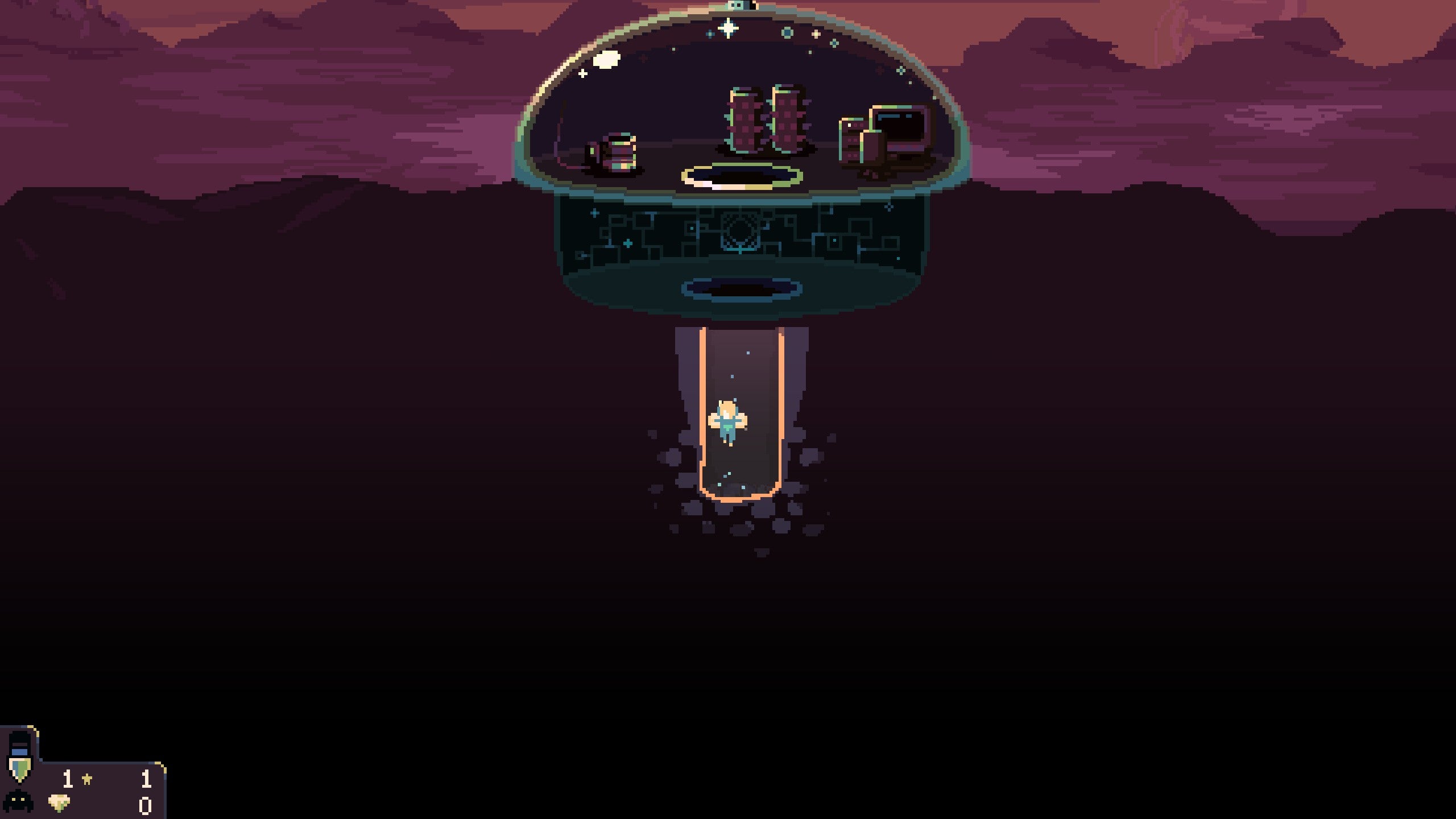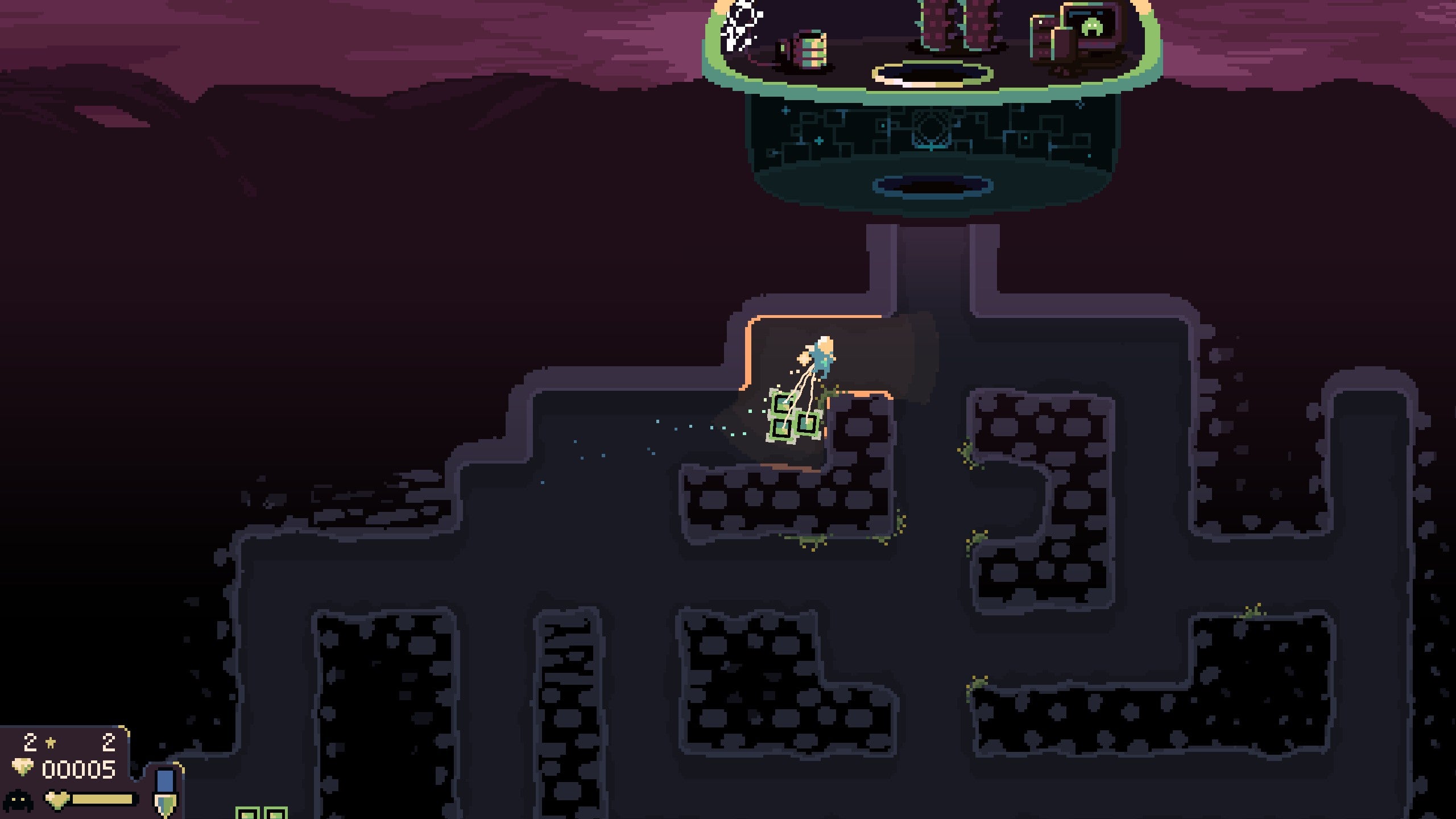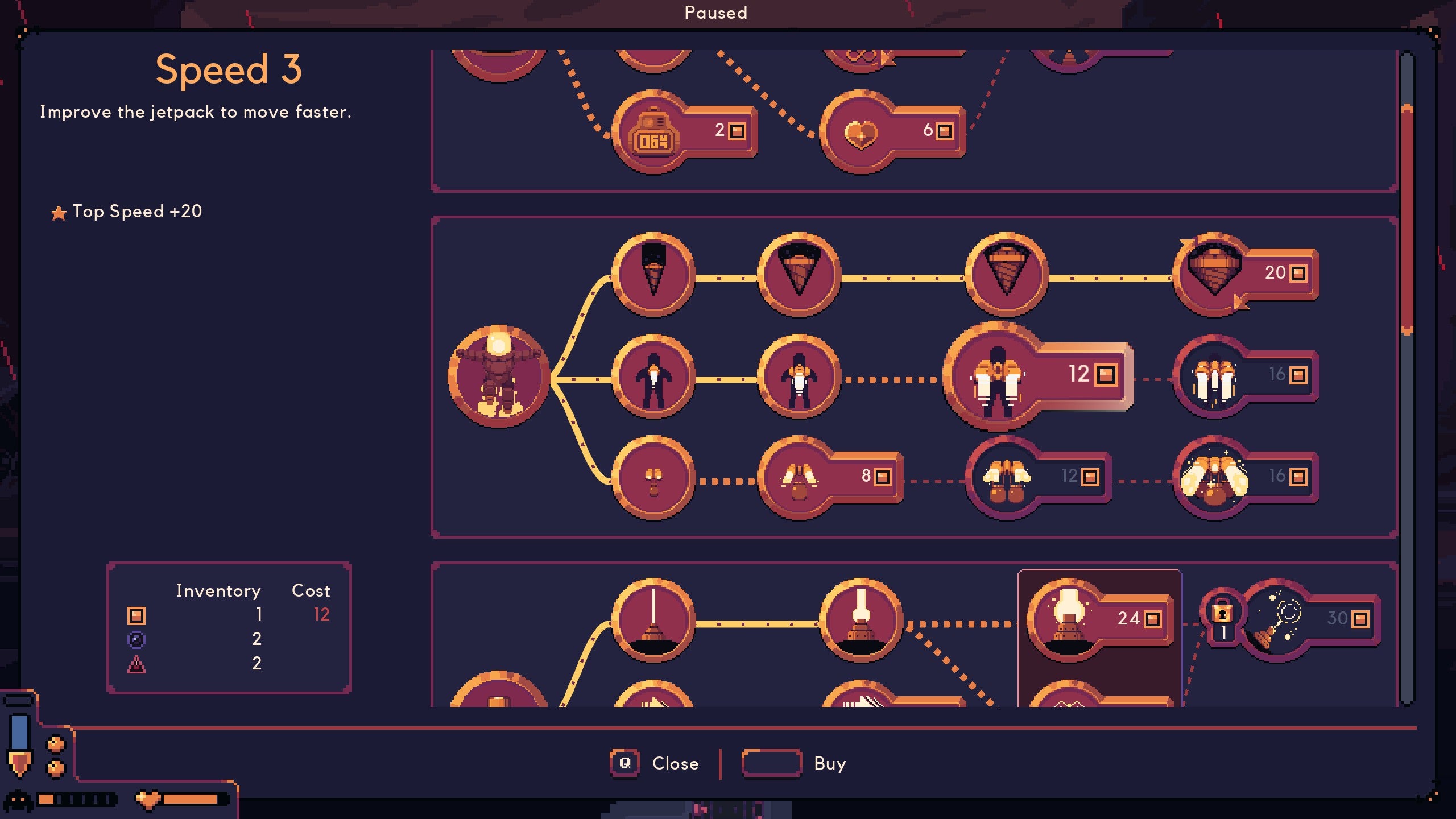Then, inevitably, it isn’t. Just as I get some real momentum going, a particularly savage wave of shadowy monsters overwhelms me, from both the air and ground, and my precious dome cracks and breaks and I am done for. Game over, try again. And the other part of me is peeved it failed. But I know this is how it goes, that these games are about trial and error and experimentation, and feeling your way to winning combinations of upgrades, so I grit my teeth and excavate the ground beneath my dome again. But each time I repeat the cycle, some of the sheen fades, because the core activity in the game, digging, doesn’t really change. Every time I face it anew, it feels more like the laborious work it is, and I know it will be a while before I unlock the upgrades that make light of it. And just as I do, just as I build up that sense of momentum again, the inevitable overwhelming wave of enemies comes and I am dead again, and my willingness to start over wanes. Let’s backtrack a bit. Dome Keeper is a game of two parts: a base defence game and a digging game. The base defence happens up top, under the domed roof of your base. You’re a spaceperson thumped down onto a hostile enemy planet, and this is the base you’ve popped up like a festival tent. It’s a small base and you won’t expand it, but you will upgrade the capabilities of it. A lot of that upgrading concerns your defences, which are either focused around a cannon mounted on the dome, or a sword - yes that’s right: a giant sword - cool, eh? Both can move over the dome left and right to tackle enemies approaching from either side. The cannon is the simpler of the two defences, as you hold down a button to emit a beam from it. The sword is more complex because it does two things: swishes left and right to slice at enemies, and can be fired to hit enemies in the air at range - an attack you have to guide. Pretty much every aspect of the above can be upgraded. The cannon’s beam can be made stronger and you can make it move across the dome quicker. You can even split the cannon in two, like a mirrored image, but it will halve the beam’s power - there are trade-offs in all upgrade routes you take. The sword, meanwhile, has more possibilities. It can be made chunkier to do more damage, or be made longer and slimmer to move more quickly. You can also make the launcher recharge much more quickly so you can keep popping it out, or you can turn it into a slower-recharging projectile of death, a lot like Yondu’s amazing arrow in Guardians of the Galaxy, weaving it around a whole sky of enemies. You can add a kind of hilt to the sword’s base, too, that can rebound enemy projectiles, providing you’re in the right place. So as you can see, mastering the sword defence dome is where the real skill lies - it’s not easy. On top of this, you can improve your dome’s health and shields; add pulsing electric charges; add self-moving stun guns - there are all sorts of additional defensive upgrades on offer. Upgrades are funded by resources, and resources are hidden in the ground beneath your base - the ground you excavate. You do this simply by moving into a block of earth, which will automatically make you dig it, and some blocks break down quicker than others. Spotting the easier routes through the ground is part of your accrued skill in the game. Resource squares are coloured differently and you will get clues that they’re close at hand. And when you find one and break it apart, smaller resource tokens pop from it that you will need to haul back to base. That, briefly, is digging, and like base defence, nearly every aspect of it can be upgraded. You can increase the power of your drill, your haul strength, your fly speed. You can even, by recovering special relics, choose major upgrades to do a lot of the heavy lifting for you, like a lift that automatically takes resources up to your base, or a cute little dinosaur pet that automatically digs for you. There’s also a scanner to pinpoint resources, a bomb to blast whole chunks of ground away - there are many choices, and all of them have upgrade-trees of their own. In other words, there are a lot of upgrades to choose between, but there aren’t a lot of resources to spend on them. There’s an almost purposeful air of austerity in the game, which forces you to think hard about what to specialise in. And the clincher in all of this is time. Time governs everything you do. Every few minutes, a new wave of enemies will try to break your dome above, and if you’re not in your command seat underneath the dome to control your defences, they will attack unchallenged. To begin with, this isn’t much of a problem because you won’t have dug far so you’ll be close at hand. But as you start digging deeper, it will take a chunk of time to return home and you will look for any advantage to speed this up. The question is, always, how much time can you spare and how can you win more of it? But you will also want stronger defences too, because the strength of enemy waves will increase, and if you leave yourself weak in this area, Dome Keeper will not hesitate to punish you for it. So you will be torn; “What to do?” is the strategy of the game. The problem with this design is a lot of the fun lies in the upgrades. Pulverising a path through blocks that used to slow you down is great; cleaving packs of enemies with an upgraded sword is delicious; and vaporising enemies with a mega-canon is wonderful. And the game knows this - the game makes you want this. But spending too long without them slows the whole formula down and makes it dull, makes it feel repetitive and gives space for frustration to creep in, especially when, just as you seem to get ahead, another wave of enemies arrives to destroy you. Incidentally, there are a couple of different modes you can play the game on. The easier Relic Hunt mode has you looking for a large relic in the ground below, and once you haul it to the top, you win and unlock new options to start a new game with, like the sword defence base. This mode feels much more polite and won’t really stretch you. But it’s the other game mode, the Prestige Mode, that feels like the main event, where you earn high scores and compete against other players. And as far as I know, this mode goes on and on indefinitely, scaling in difficulty the longer you play. It also introduces even more things to spend your limited resources on, which revolve around your capacity to earn points for each wave of enemies you survive. Dome Keeper, to me, feels like a game as divided as my thoughts are on it. The difficulty I don’t mind. I’ve even come to think of the austere nature of it as part of the charm. The moody, brooding nature of the music and ominous sense you’re going to die at some point juxtaposes beautifully with the cute pixel art look. And beating something difficult is always half of the allure, earning you the literal prestige the game’s mode is named after. But by dividing itself across two kinds of games - digging and base defence - Dome Keeper has struggled to master either one, leaving neither feeling like a complete success in its own right. Digging and hauling too often feel like chores and do not inherently have the repeatable enjoyment of, say, combat in Hades or card strategy in Slay the Spire. And base defence never feels developed enough to the point where you’re having thrilling battles repelling hordes of attackers - too often it ends with a bemused feeling about why you suddenly died. Too often it ends in frustration. Not often enough, it results in fun.




